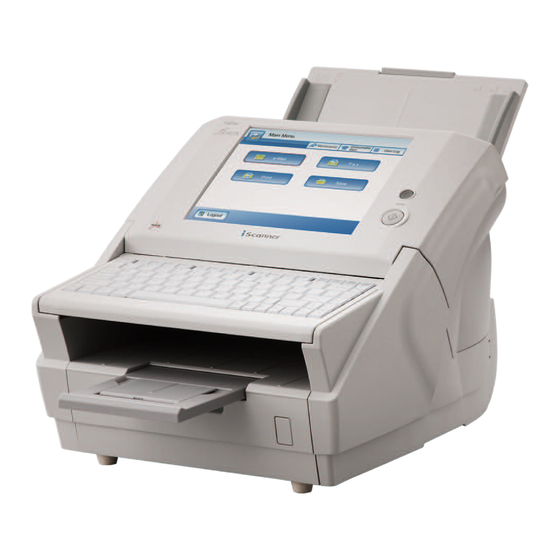Appendix D
Network Connection Troubleshooting
■ Checking Basic Network Operation with a Ping Test
If a network connection is not possible, refer to "3.9 Checking the Network Connection" (page 11) for ping results and
how to deal with them.
Connection
Server name
Result
status
setting
"Ping statistics" shows
OK
IP address / host
"Lost=0 (0% loss)"
name / FQDN
"Ping statistics" shows
NG
IP address / host
"Lost=4 (100% loss)"
name / FQDN
IP Address
Host name /
FQDN
"Ping statistics" shows
NG
IP address / host
"Lost=N (1 to 99%
name / FQDN
loss)"
IP address / host
name / FQDN
"Hardware error"
NG
IP address / host
name / FQDN
"Ping request could
NG
Host name /
not find host
FQDN
xxxxxxxxx. Please
check the name and
try again."
OK: Connection is operating normally. NG: Connection is faulty.
Action
None
Check that the ping target IP address, host name, or
FQDN is correct.
If the ping target IP address is correct, refer to "Fail-
ure to Connect to a Server using its IP Address" (page
24) for further solutions.
On the "Network Status" screen, change [Link speed /
Duplex mode] from "Auto-Negotiation" to a fixed mode.
This can be changed as follows:
1.
Select the [Network Settings] tab on the top menu.
2.
Press the [
] button on the left side menu.
3.
Select the [Network Status] tab on the left side menu.
4.
On the "Network Status" screen, select [Link Speed/
Duplex Mode].
5.
Press the [OK] button.
There may be a problem with the quality of the LAN
cable. Replace the LAN cable and try again.
On the "Network Status" screen, change [Link speed /
Duplex mode] from "Auto-Negotiation" to a fixed mode.
This can be changed as follows:
1.
Select the [Network Settings] tab on the top menu.
2.
Press the [
] button on the left side menu.
3.
Select the [Network Status] tab on the left side menu.
4.
On the "Network Status" screen, select [Link Speed/
Duplex Mode].
5.
Press the [OK] button.
The LAN cable may have become disconnected dur-
ing the Ping test. Check the status of the LAN cable
and try again.
Check that the ping target host name or FQDN is cor-
rect.
Check that the DNS server or WINS server settings
are correct.
If the ping target host name or FQDN is correct, refer
to "Failure to Connect to a Server using its Host
Name or FQDN" (page 25) for further solutions.
23
■ Failure to Connect to a Server using its IP Address
If a server cannot be connected to by using its IP address, and does not respond to a ping test, try the following steps:
No.
Problem
1
Connection error between a server and the
scanner, or problem with the LAN cable.
2
IP address or subnet mask is invalid.
3
When using DHCP, the DHCP server does
not operate normally, or there is a problem
with the DHCP server settings.
4
Another host or communication device is
connected using the same IP address as
the scanner.
5
Access is denied due to the establishment
of a firewall between the server and the
scanner.
fi-6010N Network Scanner Getting Started
Action
Check that the LAN cable has been attached to both the scanner
and server correctly.
If the server is connected using a LAN cable (straight type), in
case auto-mdi (automatic selection) is not supported, a LAN
cable (crossover type), switch, or router is required between the
scanner and server.
If this is not the case, the LAN cable may be faulty. Find a
LAN cable that functions normally and try again.
On the "IP Address" screen, check that the IP address or subnet
mask settings are correct.
For more details about the "IP Address" screen, refer to "3.5
Setting the IP Address/DHCP" (page 8).
Check the DHCP server connection status and the details of the
server settings.
If using DHCP, on the "Network Status" screen, check that IP
address, subnet mask, and default gateway settings are all cor-
rect.
If these settings are not correct, the DHCP server may not oper-
ate normally, or the DHCP server may not assign valid IP
addresses because of restricted number of leases or MAC
address validation.
If the DHCP server operating environment is changed, restart
the scanner.
The "Network Status" screen can be displayed as follows:
1.
Select the [Network Settings] tab on the top menu.
2.
Press the [
] button on the left side menu.
3.
Select the [Network Status] tab on the left side menu.
If the same IP address has already been used by another host or
communication device, then even if the other device has been
given a different IP address the server may not recognize the
scanner's "duplicate" IP address until it is rebooted. Restart the
server.
If a duplicate IP address connection from another host or com-
munication device exists on a LAN, both it will be unusable.
If a duplicate IP address connection from another host or com-
munication device exists, pull out its LAN cable and restart the
server.
If a firewall has been established between the server and the
scanner, check that it has not been set to deny access to the net-
work.
24

